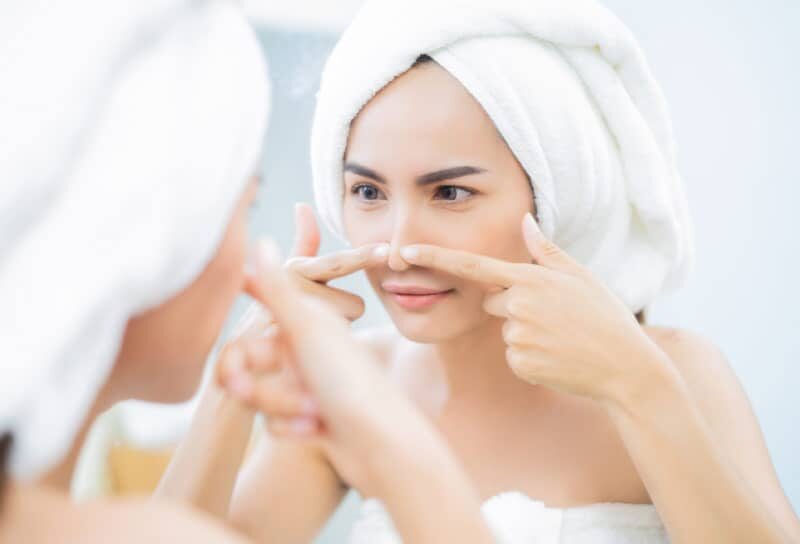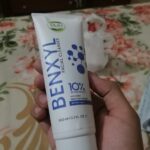Introduction:
Blackhead Removal, those pesky little spots that seem to appear out of nowhere, are a common skincare concern for many. While they’re not harmful, they can be unsightly and frustrating to deal with. But fear not, as we delve into the science behind blackheads and explore effective removal techniques. From understanding what blackheads are to exploring preventive measures and professional treatments, this comprehensive guide has you covered.

Understanding Blackheads:
Blackheads, scientifically known as open comedones, are small bumps that appear on the skin due to clogged hair follicles. They are a particular kind of acne lesion brought on by a buildup of bacteria, dead skin cells, and excess oil (sebum) in the pores. When the pore remains open, the accumulated material oxidizes upon exposure to air, giving it a characteristic dark appearance.

Factors Contributing to Blackheads:
Blackhead formation is caused by a number of factors, such as:
Excess Sebum Production: Overproduction of sebum by the sebaceous glands can lead to clogged pores, increasing the likelihood of blackheads.
Dead Skin Cells: The shedding of dead skin cells can mix with sebum, forming a plug that blocks the pore.

Hormonal Changes: Fluctuations in hormone levels, such as during puberty, menstruation, or pregnancy, can stimulate the production of sebum and contribute to blackhead formation.
Cosmetics and Skincare Products: Certain cosmetics and skincare products containing comedogenic ingredients can clog pores and exacerbate blackheads.
Environmental Factors: Exposure to pollution, humidity, and sweating can also contribute to pore congestion and blackhead formation.
Effective blackhead removal techniques:
While it’s tempting to squeeze or pick at blackheads, these methods can lead to skin irritation, inflammation, and even scarring. Instead, opt for gentle and effective blackhead removal techniques:
Cleaning: To get rid of extra oil, debris, and contaminants from the skin, regular cleansing is necessary. Use a gentle cleanser suitable for your skin type, and cleanse twice daily to keep pores clear.

Exfoliation: Exfoliating the skin helps to remove dead skin cells and prevent the buildup of debris within the pores. Choose a chemical exfoliant containing ingredients like salicylic acid or glycolic acid. Which can penetrate the pores and dissolve the contents of blackheads.
Steam: Steam treatment can help to open up pores and soften the plug of a blackhead. Making it easier to remove. Simply hold your face over a bowl of hot water or use a facial steamer for a few minutes before gently extracting the blackheads with a comedone extractor tool.
Clay Masks: Clay masks containing ingredients like kaolin or bentonite clay can help to absorb excess oil and impurities from the skin. Reducing the appearance of blackheads. Apply a thin layer of clay mask to clean, dry skin. Leave it on for 10–15 minutes, then rinse off with lukewarm water.
Retinoids: Topical retinoids, such as tretinoin or adapalene, are derivatives of vitamin A that help to unclog pores. Increase cell turnover, and prevent the formation of new blackheads. Apply a pea-sized amount of retinoid cream or gel to clean, dry skin at night. And always use sunscreen during the day, as retinoids can increase sun sensitivity.
Preventive Measures:
Preventing blackheads involves adopting a consistent skincare routine and making lifestyle changes to minimize pore congestion. Consider the following preventative actions:
Cleanse Twice Daily: Cleansing your skin twice daily helps to remove oil, dirt, and impurities that can contribute to blackhead formation.
Use Non-Comedogenic Products: Look for skincare and makeup that is labeled as non-comedogenic. Which indicates that it is made with ingredients that aren’t meant to clog pores.

Moisturize: Keeping your skin hydrated with a lightweight, non-comedogenic moisturizer can help to maintain skin barrier function and prevent excess oil production.
Protect Your Skin: Apply a broad-spectrum sunscreen with an SPF of 30 or higher daily to protect your skin from harmful UV rays and prevent sun damage.
Avoid Touching Your Face: Touching your face can transfer bacteria and dirt from your hands to your skin, increasing the risk of pore congestion and blackhead formation.
Professional Treatments for Blackhead Removal:
For stubborn Blackhead Removal or persistent acne, professional treatments performed by a dermatologist or licensed esthetician may be necessary. These treatments include:
Chemical Peels: Chemical peels use exfoliating agents, such as alpha-hydroxy acids (AHAs) or beta-hydroxy acids (BHAs), to remove dead skin cells and unclog pores, resulting in smoother, clearer skin.
Microdermabrasion: Microdermabrasion is a minimally invasive procedure that uses a diamond-tipped wand or fine crystals to exfoliate the outer layer of skin, reducing blackheads and improving skin texture.

Extraction: Professional extraction involves the skilled removal of blackheads and other impurities using specialized tools in a sterile environment, minimizing the risk of scarring or infection.
Laser Therapy: Laser treatments, such as fractional laser resurfacing or intense pulsed light (IPL) therapy, can target and shrink oil glands, reduce inflammation, and improve the appearance of blackheads and acne lesions.
Finally Blackhead Removal
Blackheads may be a common skincare concern, but they can be effectively managed with the right approach. By understanding the factors contributing to blackhead formation, adopting proper skincare techniques, and seeking professional treatments when necessary, you can achieve clearer, smoother skin and boost your confidence. Remember, consistency is key, so stick to your skincare routine and be patient as you work towards a blackhead-free complexion.










